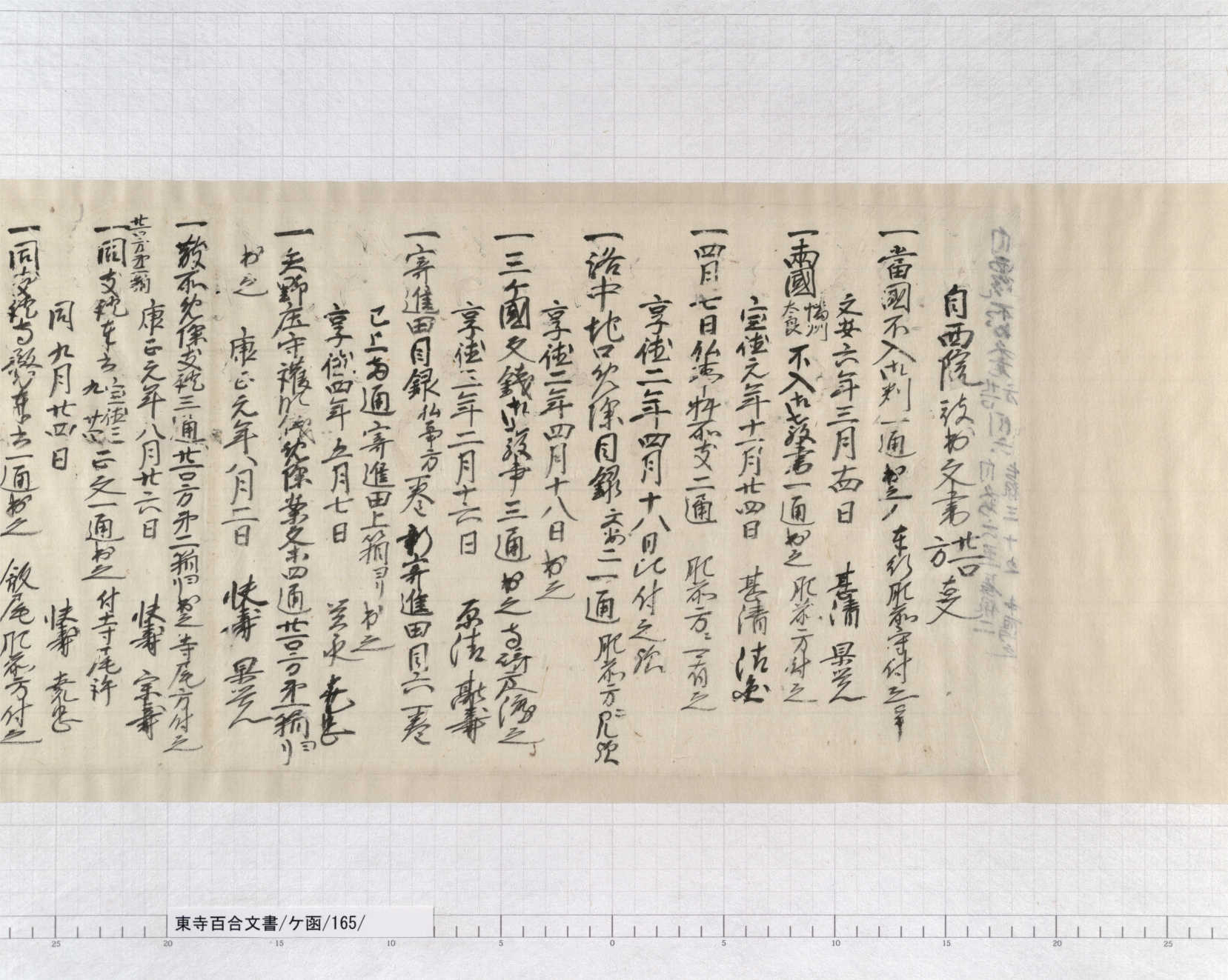The documents housed in Sai-in Bunko (西院文庫, Sai-in Library) of Mieido (御影堂) were sometimes removed from the library to study previous precedents or to use as evidence at trial. Any person who removed documents from the library was required to write his signature in a book called “Sai-in Bunsho Suito-cho (西院文庫出納帳),” which still provides details of what documents were removed and returned by whom 500 years ago.

The removal and return of documents had to be conducted by two people, and one of them was required to sign his name both time when removing and returning the documents. According to the “Monjo Suito-nikki (文書出納日記)” above, “Go-hanmotsu Yon-tsu (御判物四通, four documents called go-hanmotsu)” were removed from “Nijuikku Daiichi-bako (廿一口第一箱, the first box of Nijuikku)” by Gyochu (尭忠) and Soju (宗寿) on December 6, 1459, and returned by Jinzen (仁然) and Soju (宗寿) on March 2 the following year. Gyochu was the bugyo (奉行, manager) of Nijuikku-kata and Soju was one of the kuso monks.

Documents that remained unreturned for a long period of time were listed to remind people who had removed the documents to return them. The document above, written in 1459, is a list of unreturned documents. Most of the documents were only removed for about 10 days or a month at the longest; nevertheless, it seems that there was a document that had not been returned for more than 10 years since 1449. It was probably not unusual for documents submitted to a court as documentary evidence not to be returned for a long period of time. The management system of documents using suito-cho (出納帳, a record of document retrieval and return) was supposedly established in the early 15th century. Before the establishment of the system, a list of removed documents, referred to as chumon (注文), was placed in the document storage box from which the documents were removed. The document below is an example of chumon.
